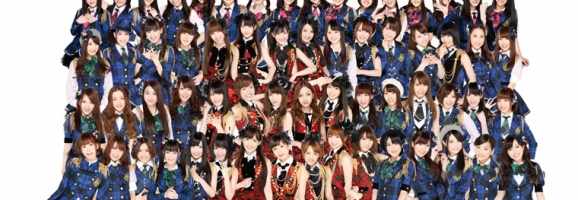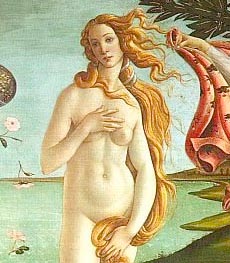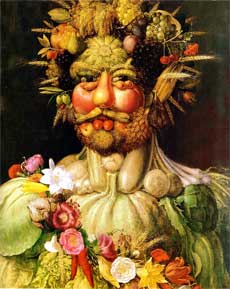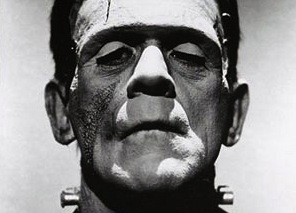From Helen of Troy to Eguchi Aimi: The True Story of a Beautiful Lie

One would think that a pop band with more than eighty members would be thinking about slimming down a little, not actively recruiting new members. But this is precisely what the phenomenally successful Japanese girl group AKB48 continues to do year on year. Given its sheer size, AKB48 is sub-divided into strictly ranked teams, and the ultimate aim of its veteran members and newbies alike is to get into the one that actually lets them mime and dance on stage: Team A. The rivalry must be intense, and it is all too easy to imagine that accusations of conspiracy get flung around on a daily basis. But in spite of this frightening prospect, AKB48 is still flooded with audition videos from eager sixteen-year-olds (they may be older, of course, but the point is that they look and sound like a sweet teen) who are desperate to join the cutesiest gang around.
It is always an exciting occasion when a new girl is admitted into the AKB48 family. But one girl generated a particularly strong buzz of interest from fans and the general public. Making her debut in June 2011, sixteen-year-old Eguchi Aimi from Saitama immediately stood out from her peers: she was not only prettier than all the other girls, she sang better than them, too. In fact, she was flawless – it was as though someone had taken the very best attributes from the existing band members and synthesised them to create a perfect pop star.

Well, as it turns out, that was precisely what had happened. Eguchi Aimi is the world’s first cyber pop star – a computer-generated composite of six girls’ faces and voices. Yes, those fine white teeth of hers are made up of millions of pearly white pixels. Pretty remarkable, really.
But unsurprisingly, ever since she had her beans spilt, the poor girl has been subject to admiration and criticism in equal measure. Some welcome her as a harbinger of an exciting technological future when we will all teleport to work and wear shiny bodysuits that never get dirty. Others, on the other hand, regard her with resentment and single her out as yet another symptom of a messed-up society that is too obsessed with an unachievable ideal of beauty. Along with the airbrushing habit of the fashion and cosmetic industries, Eguchi Aimi has been criticised for making impressionable young girls feel insecure and unattractive in their own skins.
Of course, we shouldn’t feel too sorry for Eguchi Aimi. After all, she couldn’t care less. But let us not be too hasty in our judgement of her creators. Step back in time, and it becomes clear that these Japanese scientists only did what artists had been doing for millennia. The story begins with an ancient Greek painter of the 5th century BC, Zeuxis. None of his paintings have survived the ravages of time, but we get a fascinating glimpse into his approach from various written records. A particularly popular account tells us that Zeuxis used five different models for his painting of Helen of Troy, the dangerously beautiful daughter of the god, Zeus.
 This account of Zeuxis and his five models became very influential during the Italian Renaissance, and consequently, there was a growing demand for portraits of composite ‘beauties’. One prominent artist who specialised in painting beautiful imaginary women was Sandro Botticelli, and his paintings manifest the same obsession with ideal beauty as Eguchi Aimi. Of course, beauty is subjective and it varies from culture to culture, but the principle remains the same. So whereas the modern Japanese ideal of beauty is a fresh-faced teen with a funky hairdo and inflated pupils, the Italian ideal looked like Sandro Botticelli’s generic women: voluptuous and long-limbed, with a large forehead and tumbling locks of golden hair. Oh, and judging by the nude damsel in Botticelli’s iconic painting The Birth of Venus (1486), they had to have weirdly slumping shoulders and painfully dislocated elbows, too.
This account of Zeuxis and his five models became very influential during the Italian Renaissance, and consequently, there was a growing demand for portraits of composite ‘beauties’. One prominent artist who specialised in painting beautiful imaginary women was Sandro Botticelli, and his paintings manifest the same obsession with ideal beauty as Eguchi Aimi. Of course, beauty is subjective and it varies from culture to culture, but the principle remains the same. So whereas the modern Japanese ideal of beauty is a fresh-faced teen with a funky hairdo and inflated pupils, the Italian ideal looked like Sandro Botticelli’s generic women: voluptuous and long-limbed, with a large forehead and tumbling locks of golden hair. Oh, and judging by the nude damsel in Botticelli’s iconic painting The Birth of Venus (1486), they had to have weirdly slumping shoulders and painfully dislocated elbows, too.
This obsession with ideal beauty was so viral in Renaissance Europe that one very eccentric artist actually dedicated his entire career to making a mockery of it.  And his legacy is possibly the weirdest and most delightful collection of portraits ever to have been conceived. For his portraits of his enthusiastic patrons at the Habsburg court in Vienna, Guiseppe Arcimboldo (1526-1527) synthesised not the best attributes of the human race, but those of the vegetable kingdom. So juicy grapes might represent a generous mop of hair; peaches bursting in their skins could serve as ruddy cheeks; and a warty cucumber made for a perfect nose. These are hardly the most flattering portraits in the world, but they are quite effective at making us remember the “face” of those who commissioned them.
And his legacy is possibly the weirdest and most delightful collection of portraits ever to have been conceived. For his portraits of his enthusiastic patrons at the Habsburg court in Vienna, Guiseppe Arcimboldo (1526-1527) synthesised not the best attributes of the human race, but those of the vegetable kingdom. So juicy grapes might represent a generous mop of hair; peaches bursting in their skins could serve as ruddy cheeks; and a warty cucumber made for a perfect nose. These are hardly the most flattering portraits in the world, but they are quite effective at making us remember the “face” of those who commissioned them.
Clearly, the obsession with ideal beauty has been around for a very long time, and it probably isn’t going to disappear any time soon, either. The only real difference between Botticelli’s women and Eguchi Aimi is that we no longer rely upon artists to give us glimpses of ideal beauty, but scientists and nerds. They are the true idealists of this age. So although art used to be the arch nemesis of humble nature, technology has take over that role.
The prospect of encountering more cyber beauties is rather unsettling, because unlike painted portraits, they can talk – and it probably won’t long before they will be walking amongst us, too. We are only a few technological steps away from the nightmares of The Matrix (1999), Surrogates (2009) and other similar dystopian sci-fi fantasies. In spite of our good and innocent intentions, we might end up creating a monster. After all, this is precisely what happened to the idealistic young scientist in Mary Shelley’s Frankenstein (1818). So to end with a timely message of caution, here is an extract from this most chilling of gothic tales:
‘How can I describe my emotions at this catastrophe, or how delineate the wretch whom with such infinite pains and care I had endeavoured to form? His limbs were in proportion, and I had selected his features as beautiful. Beautiful! Great God! His yellow skin scarcely covered the work of muscles and arteries beneath; his hair was of a lustrous black, and flowing; his teeth of a pearly whiteness; but these luxuriances only formed a more horrid contrast with his watery eyes, that seemed almost of the same colour as the dun-white sockets in which they were set, his shrivelled complexion and straight black lips.’
We live in a brave new world. Who knows whether one of Eguchi Aimi’s descendants will turn out to be the next Miss Universe or a monster?

What do you think? Leave a comment.











Great article! Loved the foreboding conclusion and the topic as a whole, really informative and easy to grasp, keep up the good work!
Kudus to you. Very interesting topic here. I never heard about this group.
Am I the only one who feels that here’s something both cool and deeply disconcerting about this.
No, you’re not.
Eguchi Aimi is stunningly realistic, but also a little creepy. Fake humans have always had telltale giveaways that reassures us and make us believe that we can recognise them. But I don’t think anyone would have guessed that Eguchi Aimi isn’t real if they hadn’t been told. The next obvious question is: could someone fall in love with a synthetic creation such as Eguchi Aimi? Definitely. In fact, I bet that right now there are people in Japan who are pretty damn upset about the whole thing.
Many thanks for reading and leaving comments. I certainly get the chills from this kind of thing, Mike. And I think Mel’s question is definitely worth exploring.
Great article Sarah! Keep it up!
This was an extremely fascinating article on a subject I know very little about–AKB48–and the connections you draw between Renaissance art and contemporary cyber-art are intriguing. I love the way digital media is changing many of our conceptions of art and culture and though the possibilities seem endless, I’m always reminded of that line in Jurassic Park when one of the characters says, “Just because it can be done doesn’t mean that it should.”
Modern media is so powerful and pervasive that this sort of thing can be really frightening. We live in a world where the old adage, “believe none of what you hear and half of what you see’ (or however it goes) is particularly true.
We can fake nearly anything now. Soon the fakes may be preferred over the real thing, and when the fakers are not immediately obvious, things are getting very sad for us as an intelligent species.
Sort of the old, ‘just because we can, does not mean we should”.
Wonderfully written, and more than a little chilling article.
Thanks!
I can tell you’ve put a lot of thought into this. But I think it could have been structured a bit better. Half of the article talking about one thing and half about several. Perhaps establishing your point in the 1st or 2nd paragraph could have helped. (Just a personal observation, don’t hate me!)
Interesting subject you’ve chosen and one that is very close to my heart. I think you would enjoy John Berger’s book, ‘Ways of Seeing’ in which he sets out a very convincing argument in support of the influence of patriarchal hegemony on the visual arts. Berger skilfully leads the reader into a, literally, new way of seeing beneath and beyond the ideologies of economics and gender that pervade paintings throughout history and that continue to inhabit the core of the televisual and cinematic form, and particularly advertising. I could hardly believe the Japanese manufactured band! Or then again…Keep up the good work!
The idea for this article is great, very interesting. I can’t help but think about the dynamic (but poorly treated) Russian duo t.A.t.U when I read this. They were heralded as the uber sexual, way-too-young creatures of the early 2000’s but not for long after their sleazy producer was brought out in the open. I think they received a “damaged goods” stigma after that.
Thanks again to all for leaving such insightful comments. @J. Brian, no hatred incited! I do have a wiggly writing style, I know. And @Ged, thanks for reminding me that I have Berger’s book on my shelf. It’s gathering dust and really I should read it again.
It’s clever and frightening at the same time. Great article, I like your style and thought sequence.
Really interesting. But I do think there is an important distinction between Venus and Helen, and Eguchi Aimi- that the former are paintings, and the latter was meant to considered a human. Both Venus and Helen were idealisms of beauty, Venus was the very goddess of it, so I guess I understand why the artists may have chosen to have multiple women sit for their paintings, and chosen the most aesthetic features from each of them. These were women (goddess) who were unsurpassed in beauty, something to admire, but not aspire to be. They were really clearly unattainable, and the problem for Eguchi Aimi, is that she isn’t constructed that way. She was presented as an actual person, so I do agree that she sets up a standard unattainable for girls, who are encouraged to meet that standard. That being said, I do agree that in some part scientists, or at least graphic professionals are directing ‘beauty’, the same way classical artists once were.
A great article, telling us also about the implications of looking for beauty in people and defining it as a series of perfections (proportions, qualities etc.)
Merci!
This is awesome/disgusting/interesting/frightening. Technology is amazing and scary and the powers of photoshop can alter the things that God creates. The comparisons you made were wonderful in this piece were wonderful.